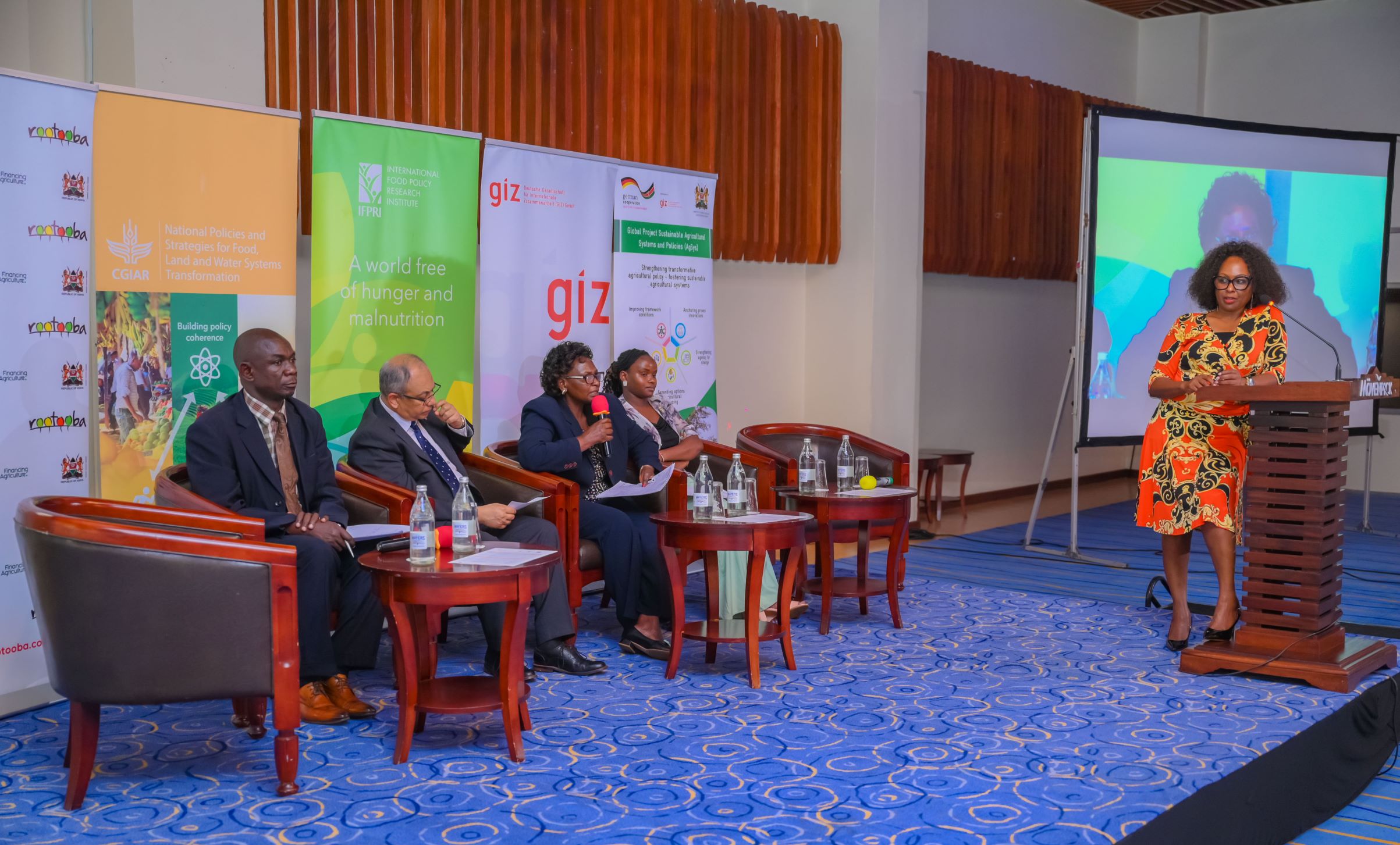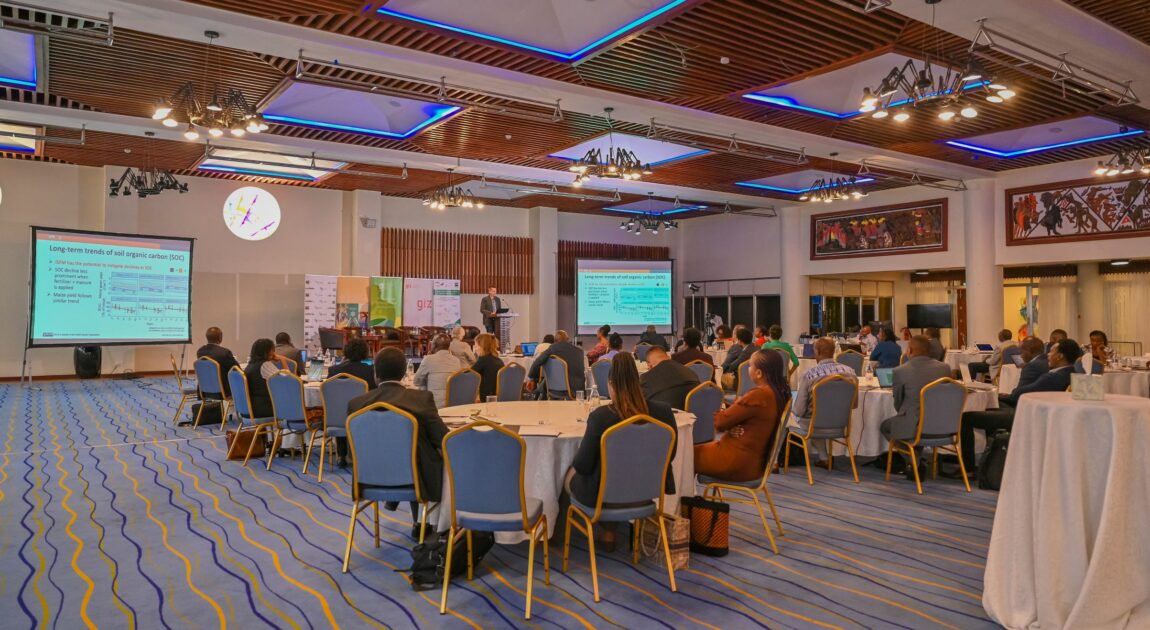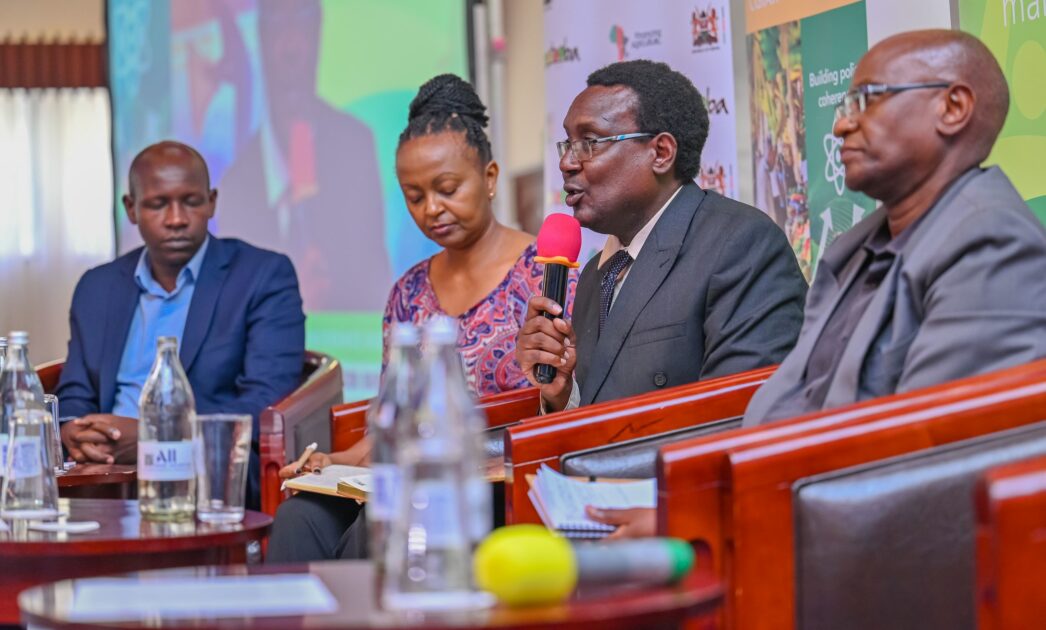Combining Short-Term Response and Long-Term Vision: Rethinking the Approach to Fertilizer Subsidies
-
From
CGIAR Initiative on National Policies and Strategies
-
Published on
25.03.24

In preparation for the Financing Agriculture Sustainably (FINAS 2024) Conference slated for March 27th and 28th, a pre-conference dialogue themed “Combining short-term response and long-term vision: Rethinking the approach to fertilizer subsidies” has taken place on the 20th of March in Nairobi. Hosted by Deutsche Gesellschaft für Internationale Zusammenarbeit (GIZ) GmbH, International Food Policy Research Institute (IFPRI), and the CGIAR Research Initiatives on National Policies and Strategies (NPS) and Excellence in Agronomy (EiA) in partnership with the Kenya Ministry of Agriculture and Livestock Development, this event delved into Kenya’s fertilizer subsidy program and strategies for achieving longer-term soil health objectives outlined in the Agricultural Soil Management Policy 2023. Overall, 50 important stakeholders came together, policymakers, private sector representatives, farmer organizations, and researchers, to share perspectives and experiences, lessons learned, and the latest research-based findings.

From the discussions it became clear that there needs to be a clear distinction between fertilizer subsidies as a short-term crisis response and public support measures for longer-term soil health management and productivity increase.
Latest research results from IFPRI and Tegemeo have been presented, showing that fertilizer subsidies indeed had a positive impact on enhancing agricultural productivity and stabilizing food prices in Kenya. However, various challenges hinder effective participation and take-up rate of the subsidy, including financial constraints, socio-economic factors, information gaps resulting in late registration or lack of awareness about the program, delayed or no phone SMS notifications from the government regarding where and when to pick up the fertilizer, and logistical challenges such as long distances to the distribution centers. Additionally, the exclusive distribution of subsidized fertilizer through the National Cereals and Produce Board at a lower cost than the private sector input dealers poses a risk of crowding out the private sector. These constraints need to be addressed if subsidies are to be used as a longer-term support measure.
In moderated discussions between the Ministry of Agriculture and Livestock Development (MoALD), Agriculture Sector Network (ASNET), Fertilizer Association of Kenya (FAK), Kenya Agriculture and Livestock Research Organization (KALRO), Kenya National Farmers’ Federation (KENAFF), Organic Fertilizer and Input Manufacturers Association of Kenya (OFIMAK), and International Institute of Tropical Agriculture (IITA), agreed that soil health issues and fertilizer-use efficiency need to be considered urgently. From the discussion, it became clear that Kenya needs to transition from blanket fertilizer to targeted support. And this transition requires the involvement of the private sector.

Here, tailored recommendations (based on soil testing results) and a basket of additional support measures, including improved seed, credit, and insurance, are needed. However, the large absence of public extension services requires other short- and medium-term solutions to supply farmers with the needed recommendations. The private sector offered to train agro-dealers in providing the needed advice to farmers. Establishing a framework for private extension services could further guarantee a minimum standard for these private extension services. Furthermore, leveraging digital agricultural extension services is crucial to enhancing efficiency and accessibility for a broader spectrum of smallholder farmers.
Overall, the private sector (represented through ASNET and FAK) reiterated its pivotal role and readiness to come in with existing knowledge and resources. The government needs to allow the private sector to be part of the subsidy program and support the last-mile distribution of fertilizer and targeted recommendations to the farmer.
Last but not least, IFPRI emphasized that to ensure scarce public resources are used wisely, it is important to compare the benefits of programs against their costs. This would entail conducting a detailed cost-benefit analysis of the input subsidy program. Also, governmental support for developing a national liming strategy to fight soil acidity in the country, support for the scaling of production and use of organic fertilizer, and alternative incentive mechanisms for soil health services should be part of the longer-term strategy.
Participants described the discussions very timely and would welcome continuing such multistakeholder conversation, resulting in a clear definition of roles and actions.
Links:
Videos highlights:
Authors:
- Hailemariam Tiruneh, Research Fellow, International Food Policy Research Institute (IFPRI)
- Sophia Baumert, Project Manager, Sustainable Agricultural Systems and Policies, Deutsche Gesellschaft für Internationale Zusammenarbeit (GIZ) GmbH
This event was hosted by Deutsche Gesellschaft für Internationale Zusammenarbeit (GIZ) GmbH, International Food Policy Research Institute (IFPRI), and the CGIAR Research Initiatives on National Policies and Strategies (NPS) and Excellence in Agronomy (EiA) in partnership with the Kenya Ministry of Agriculture and Livestock Development. We would like to thank all funders who supported this research through their contributions to the CGIAR Trust Fund.
